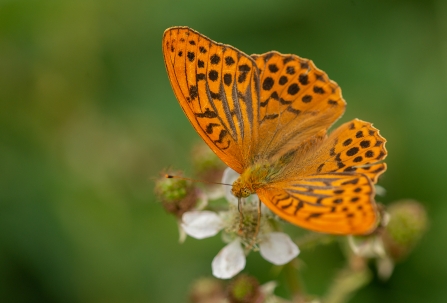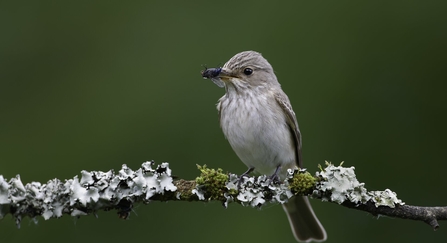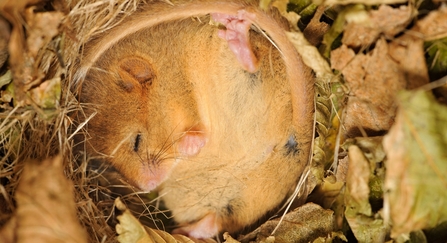The tradition of coppicing is ancient. Archaeologists have found evidence of it going back to the Neolithic period. Many species of tree can be coppiced including hazel, ash, lime, hawthorn, oak and aspen.
Early years post cutting – bare ground, full sun
The West Cambridgeshire Hundreds are one of the few places you can still find oxlips in abundance.
Flowers
Those that can survive in the dense shade of mature coppice benefit from the sudden influx of light, and at Hardwick and Hayley and other woods on the boulder clay in west Anglia, the priority species is the oxlip, found nowhere else in the UK.
In year 1 the plants bulk up and generate underground storage reserves, then in years 2 and 3 they flower profusely and set loads of seeds before gradually declining as the canopy develops. Many other woodland perennials follow this same pattern, such as early purple orchid, wild strawberry, violets, primrose and so on. Other plants persist as seeds, which are light-sensitive, and only germinate when conditions are favourable. Common cow-wheat is one example (in acid sandy soils such as found in hornbeam woods in Essex), while others colonise by drifting in on the wind, such as marsh thistle.
Clearings which are maintained as permanent open space in woodland (rides and glades) do not maintain the same range of woodland ground flora because more competitive plants take over, particularly grasses. So coppicing is highly beneficial to a specific range of plants. Most of these plants are restricted to ancient woodland, with no ability to colonise newly planted woods. At Hayley wood, the spread of oxlip from the ancient wood to a secondary wood that developed when a field was abandoned after a railway line was put next to the wood has been about 20m over 100 years!

Silver-washed fritillary by Kevin Lunham
Invertebrates
In the full sun, and with abundant nectar plants, many insects take opportunities afforded by the early years of a coppice plot. Several species of butterflies used to be found in coppice woods, the heath fritillary was known as 'The woodsman's follower'.
We have lost or nearly lost many of these species in Eastern England because of the years when no coppicing took place; these butterflies have no other habitats available, and cannot persist like plants – they need a new generation every year. Includes chequered, grizzled and dingy skipper, pearl-bordered, small pearl-bordered and high brown fritillary, Duke of Burgundy, wood white and heath fritillary (still in a few woods in south Essex). Unlikely to get these returning as the remnant populations in Britain are too far away and the populations are mostly still decline. However, the silver-washed fritillary has made a comeback in recent years.
Other less demanding species make use of the nectar and warmth of a sunny coppice plot, ranging from bumblebees to dragonflies.

Credit: Richard Steel/2020VISION
Birds
The bare ground of early years is important for some woodland specialists, such as woodlark and tree pipit, but these species are extremely rare in East Anglia and require well-connected networks of woods with really large coppice or cleared areas – they can be found in Thetford forest where they use the clear fell areas after conifers are harvested.
The open space full of flying insects can be good for spotted flycatchers, but again these are rather rare locally and have suffered in woods where grey squirrels are important predators, and in Cambridgeshire at least they are more found in cottage gardens. Spotted flycatchers have been seen in Hayley in 2019 and 2020.
Midstage – snaggly, regrowth of coppice increasing, plus rose/bramble
As the total volume of foliage goes up and the coppice area is still relatively low growth height and therefore well heated by the sun and protected from the wind, there will be a lot of generalist foliage-feeding insects such as moth caterpillars, aphids and so on, providing lots of food for insectivorous birds.
This stage is beloved of warblers, nightingales and dormice. In some woods, woodcock also occur, and they will feed in the open early stage plots and nest under bramble patches and dense cover. The impenetrable tangle after 3-5 years of regrowth is a safe place to nest, and the coppice woods have fewer of the hollow trees that resident tits and nuthatches would use, which means that the abundance of caterpillars are available for summer migrants that build nests in such habitats.
Providing there are some bramble and honeysuckle plants in the plot, flowers and fruits will also be available. As the hazel comes into nut-bearing age, the amount of food for dormice goes up considerably, and these animals really benefit from mid-succession coppice.

Torpid dormouse in nestbox by Terry Whittaker/2020VISION
Late stage – dense shade and lack of ground layer
This stage is not particularly good for much wildlife, but it is a vital period in the coppice cycle as it is the time when the trees take over the succession stage. Without the dense shade, plots would become overgrown with brambles and grasses to the detriment of spring flowers.
Note: this blog is based on a presentation by Louise Bacon, Wildlife Trust Warden for Hardwick Wood SSSI, Oct 2020

